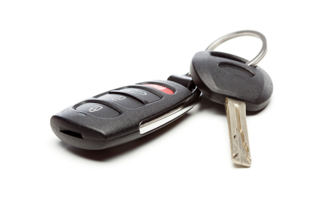What Mileage Rates Apply in 2014?

Each year, the IRS sets standard mileage rates for various types of travel. The rates can be used to figure the cost of the driving rather than keeping track of your actual car expenses. However, you still need to keep a record of your mileage, including notations on the date, odometer reading, destination, and purpose of each trip. For 2014, you can use the following rates to calculate a deduction for certain types of driving:
Business driving
The deduction for 2014 is 56¢ per mile (down from 56.5¢ per mile in 2013). If you are a sole proprietor, the deduction is taken on Schedule C.
If you are an employee, you figure your unreimbursed employee business expenses on Form 2106; the result is then claimed as a miscellaneous itemized deduction. You must itemize to claim the write-off, and your total miscellaneous itemized deductions must exceed 2% of your adjusted gross income to produce any deduction. If your employer reimburses you for your car usage under an “accountable plan,” you don’t take any deduction; the reimbursement isn’t taxable to you, and the employer (not you) deducts the reimbursement.
Medical driving
The deduction for driving to a doctor, pharmacy, hospital, or other medical treatment location in 2014 is 23.5¢ per mile (down from 24¢ per mile in 2013). You must itemize to benefit from this deduction. For 2014, you claim out-of-pocket medical costs only to the extent they exceed 10% of your adjusted gross income (7.6% of adjusted gross income if you or your spouse is 65 or older by the end of the year).
Moving
If you use your car when making a work-related move in 2014, you can deduct your costs at the rate of 23.5¢ per mile (down from 24¢ per mile in 2013). The deduction is claimed as an adjustment to gross income (“above-the-line”), so you don’t have to itemize to claim it.
However, to be eligible for the deduction, the distance between the new work location and your former home must be at least 50 miles more than the distance between your old work location and your former home. Also, you must work at the new location for at least 39 weeks for an employer or 78 weeks if self-employed (there are some exceptions).
Charity
Your out-of-pocket costs helping an IRS-recognized charity are deductible, including driving at the rate of 14¢ per mile. This rate is fixed by law; it does not change annually (it was last increased from 12¢ per mile in 1998).
Investments
If you own rental realty or other investments that necessitate using your vehicle for travel, you can deduct the costs at the same rate used for business driving. The deduction is taken on:
- Schedule E if driving relates to rental property.
- Schedule A if driving relates to other investments. In this case it is a miscellaneous itemized deduction, which is subject to the 2%-of-adjusted-gross-income floor.
Audits
If you are called to the IRS for an audit, you can deduct your mileage at the same rate used for business driving. The deduction is a miscellaneous itemized deduction, which is subject to the 2%-of-adjusted-gross-income floor.
Conclusion
The cost of driving can add up to serious deductions, as long as you maintain the required substantiation to prove your car usage. Start the year off right by setting up a record-keeping system that’s easy for you to use. This can be a small notebook left in your car console or an app on your smartphone.



